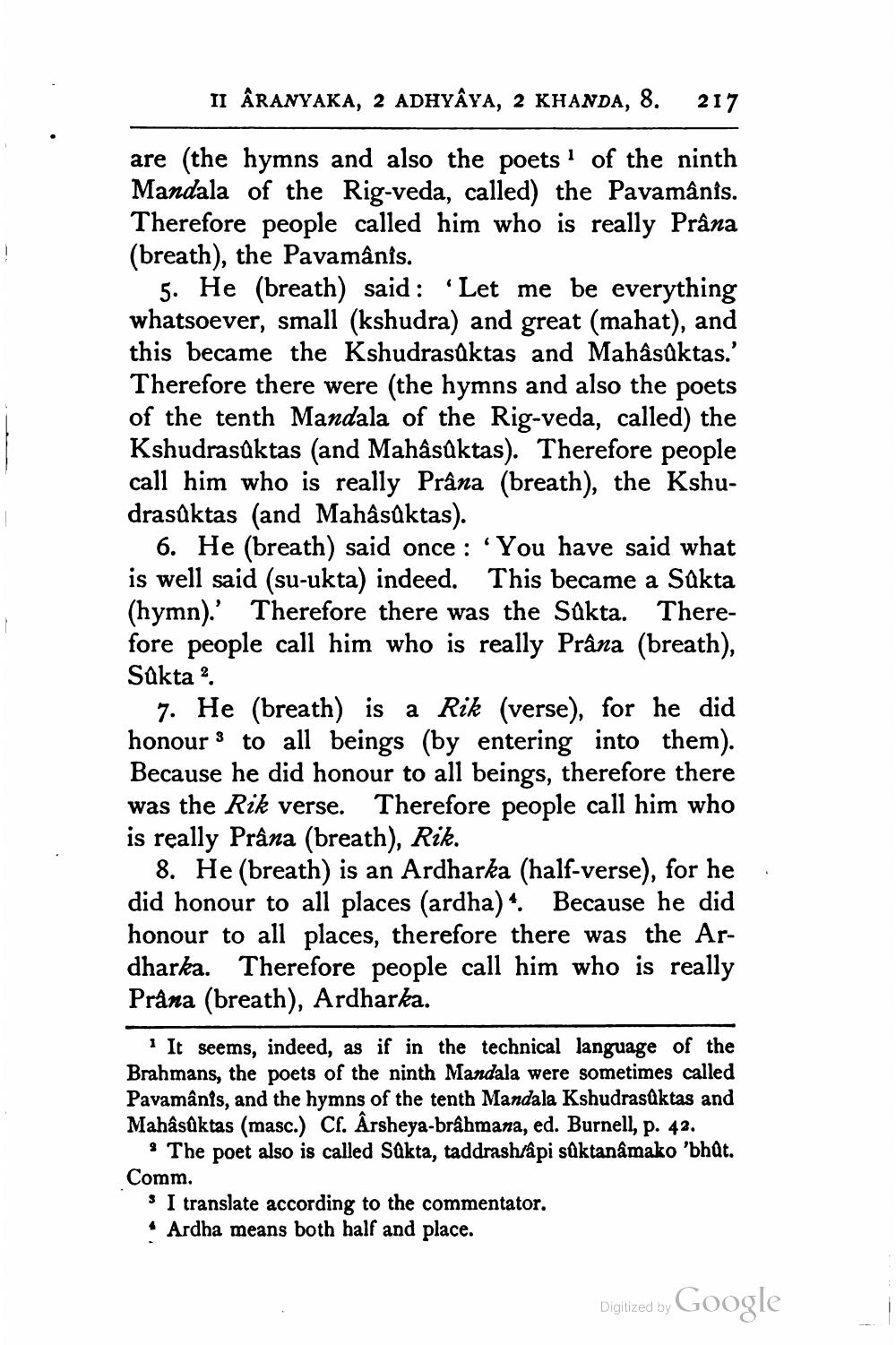________________
II ÂRANYAKA, 2 ADHYÂVA, 2 KHANDA, 8.
217
are (the hymns and also the poets' of the ninth Mandala of the Rig-veda, called) the Pavamânts. Therefore people called him who is really Prâna (breath), the Pavamânis.
5. He (breath) said: 'Let me be everything whatsoever, small (kshudra) and great (mahat), and this became the Kshudrasuktas and Mahâsāktas.' Therefore there were the hymns and also the poets of the tenth Mandala of the Rig-veda, called) the Kshudrasuktas (and Mahâsaktas). Therefore people call him who is really Prâna (breath), the Kshudrasaktas (and Mahâsaktas).
6. He (breath) said once : You have said what is well said (su-ukta) indeed. This became a Sakta (hymn).' Therefore there was the Sukta. Therefore people call him who is really Prâna (breath), Sakta 2.
7. He (breath) is a Rik (verse), for he did honour 8 to all beings (by entering into them). Because he did honour to all beings, therefore there was the Rik verse. Therefore people call him who is really Prâna (breath), Rik.
8. He (breath) is an Ardharka (half-verse), for he did honour to all places (ardha). Because he did honour to all places, therefore there was the Ardharka. Therefore people call him who is really Prana (breath), Ardharka.
* It seems, indeed, as if in the technical language of the Brahmans, the poets of the ninth Mandala were sometimes called Pavamânts, and the hymns of the tenth Mandala Kshudrasuktas and Mahâsûktas (masc.) Cf. Ârsheya-brábmana, ed. Burnell, p. 42.
9 The poet also is called Sakta, taddrash/âpi sûktanâmako 'bhật. Comm.
s I translate according to the commentator. · Ardha means both half and place.
Digitized by
Digitized by Google




